Dana Porter Library, first floor
University of Waterloo Library
Waterloo, Ontario N2L 3G1
519-888-4567 x42619 or x42445
Hello Readers,
Graham here again, to let you know that today’s blog post may make you squirm but it's bound to provide a little food for thought!
As I have been exploring our pre-1801 rare book collection I have noticed that some books are more "holy" than others. I am not talking about our rare bible collection but rather some books actually have small holes that go through the binding and text block (A text block is all the pages bound within the book). What kind of animal would dare damage such rare and valuable books you ask! Well not an animal but it seems some insects have a well-developed taste for literature. These “wormholes” as they are known are caused by bookworms!
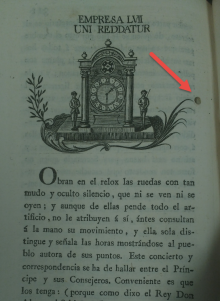
This worm was decent enough to avoid the plate (a plate is an image printed in a book).
The term bookworm may be a little misleading because there is no single insect know as a bookworm, rather a bookworm is a generalization for any insect that bores through books. Some types of moths for instance, such as the common clothes moth or the brown house moth may make a feast on your books if your preservation tactics are out to lunch. A few types of beetles like the black carpet beetle may also take a bite out of your bindings which would of course bug any librarian or archivist.
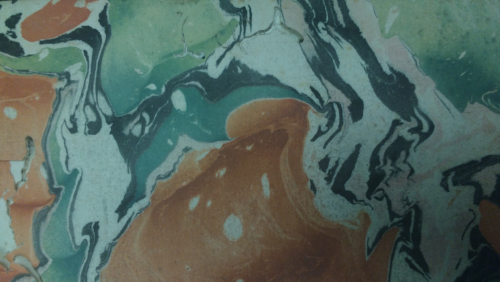
Can you spot the extra marbling in this marbled paper caused by a bookworm? See the solution below!
Perhaps the most dangerous of all the bookworms however is the booklouse, an extremely small insect that confusingly enough is neither a worm nor a true louse. Regardless of their size if left to their own devices they bore through a book cover to cover feasting on mold, paste and other organics within ill-preserved books.
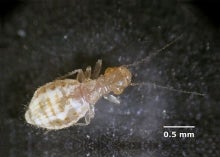
A Booklouse, don’t worry none of these live in our stacks! Image: Wikipedia Creative Commons Attribution-Share Alike 3.0 Unported license
Despite the damage done to the books some of the wormholes I have encountered create amazing and decorative patterns. It can also be a real surprise finding wormholes, sometimes there is a tiny hole in the cover or edges that you miss on first inspection. However, opening the text block can reveal extensive damage. When it comes to insect damage you truly can’t judge a book by its cover!
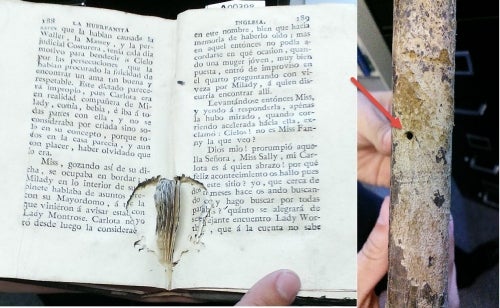
Only a small hole in the spine but great damage has been done to the text block.
While you chew over your concerns for your home library I must mention that modern bookbinding practices are much less susceptible to bookworms. It seems our contemporary materials just aren't as appetizing! Also if you find yourself consumed with worry about the books in special collections, know that our preservation techniques and climate controlled stacks ensure that our books are protected from any hungry critters. If you want to know more about bookworms or see some examples of wormholes in our collection wriggle on down to the Doris Lewis Rare Book room in the Dana Porter Library!
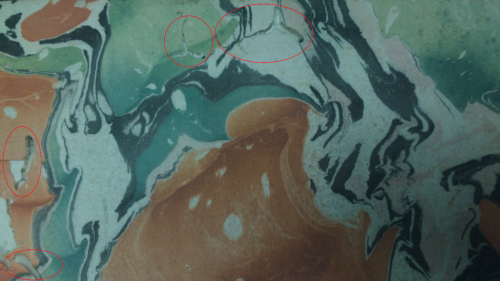
Solution to spot the worm holes
Previous post: Doris, is that you?




